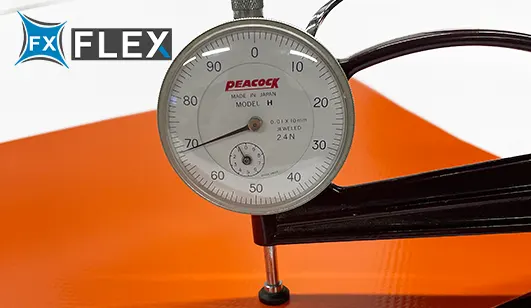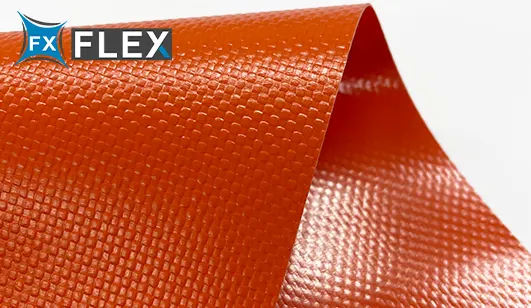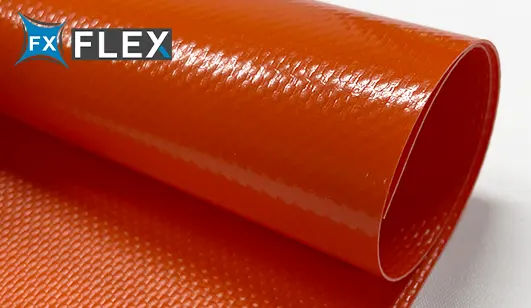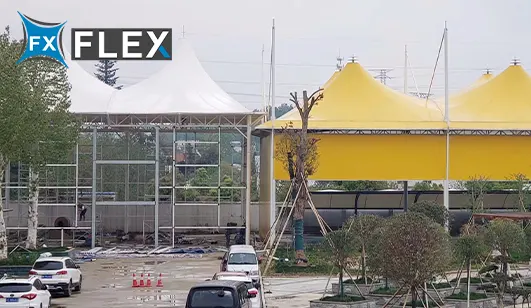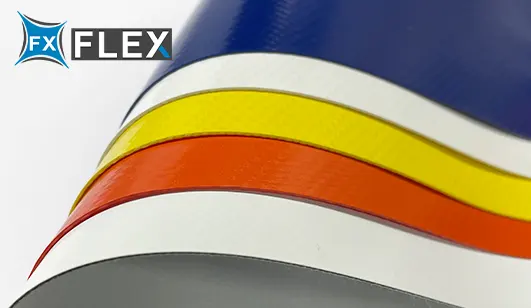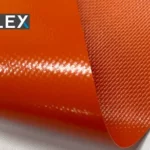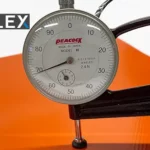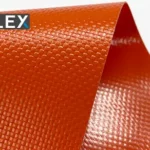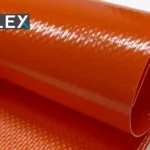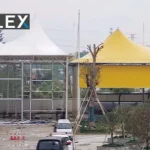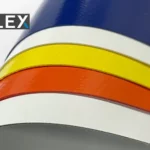Membrane in Architecture-FLFX7002
Weight: 1250 gsm/g/㎡
Base Fabric Yarn: 1650D*1650D
Base Fabric Density: 15*18/sq.in
Max Width: 5.1m
Standard Length: 50m/55yds, 100m/110yards
Available FR: B1/NFPA 701
Features: Waterproof, UV Resistance, Flame Retardant, Dimensional Stability, Self Cleaning, Long Life, Anti Mildew.
Advantage: High tear strength, Good flexibility, Non-slip, Chemical resistant, Puncture resistant
Applications: Architectural Membranes
Membrane in Architecture
In a world of dynamic architecture where innovation meets functionality, membrane in architecture have become multifunctional materials that redefine design possibilities. From creating stunning tensile structures to enhancing energy-efficient buildings, membranes have become a key player in shaping the contemporary architectural landscape.
Tensile membrane architecture represent the pinnacle of architectural ingenuity. The architects used heavy duty tarpaulin 1250gsm to create towering canopies and roofs. Known for their minimalist design and long-span capabilities, these structures redefine the concept of open, column-free space. Notable examples include the Eden Project and the Munich Olympic Stadium, demonstrating the potential of membranes to change the way we experience the built environment.
The translucent nature of PVC architectural membrane materials opens up a new dimension in architectural design. Skylights and translucent facades constructed from these membrane in architectures harness natural light to illuminate the interior, creating visually dynamic and energy-efficient spaces. Architects are increasingly incorporating these elements to blur the lines between indoor and outdoor environments and promote a harmonious connection with nature.
In the evolving architectural landscape, membrane in architectures have become a transformative element, bridging the gap between form and function. From its role in creating iconic tensile structures to its contribution to sustainable and energy-efficient design, PVC membranes are shaping the way we experience and interact with the built environment. As architects continue to explore the potential of these materials, the future will be filled with innovation and creativity that will leave an indelible mark on architectural heritage. The future of membrane architecture is expected to bring more breakthrough innovations. From smart membranes that respond to environmental conditions to novel applications of responsive facades, architects continue to push the boundaries of what is possible with these lightweight wonders.


